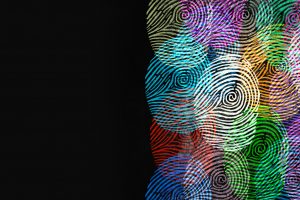This article is the second in a series identifying a number of myths related to IP rights, and explaining, in simple terms, steps you can take to recognize and protect the IP your business creates and acquires. In the first installment, the authors discuss trademark myths.
Second in this three-part series identifying myths related to IP rights is Copyright Myths.
Copyright is a form of protection provided by the laws of the United States to the authors of “original works of authorship” that are fixed in a tangible form of expression. An original work of authorship is a work that is independently created by a human author and possesses at least some minimal degree of creativity. A work is “fixed” when it is captured (either by or under the authority of an author) in a sufficiently permanent medium such that the work can be perceived, reproduced, or communicated for more than a short time. Copyright protection in the United States exists automatically from the moment the original work of authorship is fixed.
U.S. copyright law is federal law (17 U.S.C. §§ 101-1401), which addresses both unpublished and published works of authorship. There is no state law governing copyright rights, and a state cannot register or enforce a copyright.
Copyright law is a nebulous area of law, and many aspects of it do not have a straightforward answer. Below, we try to dispel certain copyright misconceptions.
1. I can sue for copyright infringement as long as I have submitted my application to the United States Copyright Office.
In the Supreme Court case, Fourth Estate Public Benefit Corp. v. Wall-Street.com, 139 S.Ct. 1881 (2019), the court unanimously ruled that a copyright infringement suit must wait until the copyright is successfully registered by the United States Copyright Office. Therefore, a pending copyright application is insufficient grounds to bring suit. Given that copyright applications are relatively inexpensive ($60 per application), we recommend registering your work whenever possible.
2. Copyright can protect my ideas.
Copyright applies to a tangible work, and cannot apply to something as intangible as an idea. Indeed, section 102(b) of the Copyright Act explicitly states, “in no case does copyright protection for an original work of authorship extend to any idea, procedure, process, system, method of operation, concept, principle, or discovery, regardless of the form in which it is described, explained, illustrated, or embodied in such work.”
3. I can copyright a name or title.
Copyright laws require creativity and originality, and do not apply to items such as names and titles that may be duplicated coincidentally, or that may be legitimately used in unrelated instances. Book titles are among the list of things that cannot be copyrighted. Titles are only “short phrases,” not original enough to be eligible for protection. The Copyright Office will not restrict titles to one book; there may be other works for which a title may be equally usable and appropriate. For example, in McGraw-Hill Book Co. v. Random House, Inc., 32 Misc.2d 704, 710, 225 N.Y.S.2d 646, 653 (Sup.Ct. 1962), McGraw Hill was unable to bar Random House from publishing a book titled, “John F. Kennedy & PT 109” even though McGraw Hill had first published a book titled, “PT 109: John Kennedy in World War II.” The court found legitimate use of the words “PT 109” and “John Kennedy” and that the words could not be copyrighted. Id. at 713.
4. Everything on the internet is in the public domain and free to use.
This is false. Although much information posted to the internet is freely available to the public, the internet is not itself public domain. Most material posted there is protected by copyright law, regardless of whether a content host obtained the requisite permissions from the author. A work does not fall into the public domain until its copyright expires, which is typically many decades after an author’s death.
5. Anything without a copyright notice is not protected.
Use of a copyright notice is optional, and has been since March 1, 1989. Thus, copyright protections apply regardless of whether a copyright notice is displayed on the work. An author of an original work may receive absolute protection as soon as the work is created. Registration is not mandatory, but it is worthwhile to place a copyright notice on a work because it reminds others that copyright exists and, therefore, may help deter infringement. Additionally, putting a notice on your work may help establish willful infringement, which enhances the monetary compensation to which you are entitled.
6. If I change someone else’s work, I can claim it as my own.
The act of copying or adapting someone else’s work is a restricted act. Any adaptation will be legally regarded as a derived work. The purpose and character of your intended use of the material is the single most important factor in determining whether a use is fair under U.S. copyright law. If you simply adapt a work, it will still be considered the work of the creator, and that person may object if you publish an adaptation without permission to do so. They are also entitled to reclaim any money you make from selling their work. If, however, your use is transformative—i.e., the new work has significantly changed the appearance or nature of the copyrighted work—you are more likely to succeed in a fair use defense. The transformative use concept arose from a 1994 decision by the U.S. Supreme Court, Campbell v. Acuff-Rose Music, 510 U.S. 569 (1994), concerning the song “Pretty Woman” by the rap group 2 Live Crew, a parody of “Oh, Pretty Woman” by Roy Orbison. The court focused not only on the small quantity taken from the copyrighted work, but also on the transformative nature of the defendant’s use, and was persuaded that no infringement occurred because the defendant added a new meaning and message rather than simply superseding the original work. This meant the new work likely would not affect the market for the original work, so the copyright owner would not suffer financial harm.
7. I can legally copy 10 percent without it being infringement.
This is not the case. Unless it is explicitly allowed under the doctrine of fair use, any unauthorized use of a copyrighted work can potentially lead to legal action. When using quotes or extracts, there is no magic figure or percentage that can be applied. Courts typically look to the quality and importance of the content copied, not simply the quantity. In fact, if you base a creation on someone’s copyrighted work, the result is called a “derivative work.” A derivative work must be substantially different from the original work (minor changes are not enough) in order to not be considered copyright infringement.
8. It’s okay to use, copy, or publish another’s work if I don’t make any money from it.
No, except in limited circumstances permitted under the doctrine of fair use, any copying or publication without the consent of the copyright owner may be deemed copyright infringement, and you could face legal action. If the use has a financial impact on the copyright owner (i.e., lost sales), then you could also face a claim for damages to reclaim lost revenue and royalties. The key factor is not the user, but the nature of the material, how it is being used, and whether the new use adversely affects the value of the original work. Because even a nonprofit educational use can undermine the value of a copyrighted work, it is advisable to consult an attorney before copying any original work.
***
We hope this has been a helpful starter guide on copyright law. Please tune in next month for part three of the series, in which we will debunk popular patent myths.
If you have questions or would like to follow up on the topics discussed in the series, please reach out to any of the authors listed above at Hunton Andrews Kurth LLP.




